Iron
How to submit an article:
- Registered users can submit any published journal article that has a unique DOI (Digital Object Identifier) name or link to Research Hub.
- For example, you can paste the full DOI link:
https://doi.org/10.1109/5.771073or just the DOI name:10.1109/5.771073into the field above and click submit. - The person who is first to submit a valid article to Research Hub will forever be credited for it, and every article submission earns you +6 Research Points.
Related Topics
Published research studies are articles that present the findings of original research that has undergone a peer-review process and has been made publicly available in scholarly journals, books or other media.
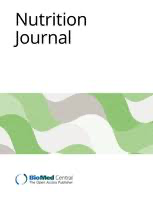
Association of maternal ultra-processed food consumption during pregnancy with atopic dermatitis in infancy: Korean Mothers and Children’s Environmental Health (MOCEH) study
2024 Jun 25 Nutrition Journal Jang W, Kim M, Ha E, Kim H
Cohort Study Eczema Ultra-Processed FoodsHigher consumption of ultra-processed food by pregnant women was linked to an increased risk of infantile atopic dermatitis within the first year of life.

Qi-Shen-Tang alleviates retinitis pigmentosa by inhibiting ferroptotic features via the NRF2/GPX4 signaling pathway
2023 Nov Heliyon Xiong M, Ou C, Yu C, Qiu J, Lu J, Fu C, et al.
Experimental Study Ferroptosis Qi Shen Tang Retinitis PigmentosaQi Shen Tang, a traditional Chinese medicine, was found to suppress retinal cell death in retinitis pigmentosa by inhibiting a process called ferroptosis.
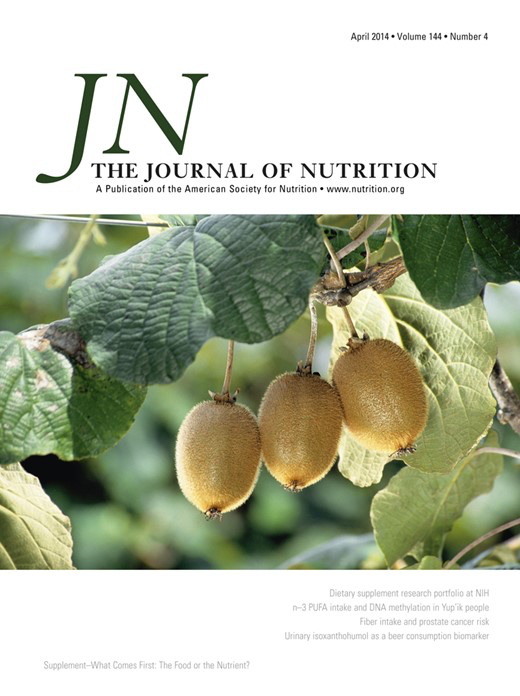
Is a Lower Dose of More Bioavailable Iron (18-mg Ferrous Bisglycinate) Noninferior to 60-mg Ferrous Sulfate in Increasing Ferritin Concentrations While Reducing Gut Inflammation and Enteropathogen Detection in Cambodian Women? A Randomized Controlled Noni
2023 Aug The Journal of Nutrition Fischer JAJ, Pei LX, Elango R, Hou K, Goldfarb DM, Karakochuk CD
Clinical Study Randomised Controlled Trial Iron DeficiencyA lower dose of iron amino acid chelate was not as effective as the standard iron salts dose in increasing ferritin levels in a predominantly iron-replete female Cambodian population.
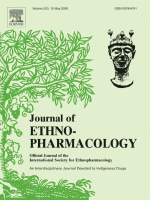
Jian-Pi-Yi-Shen formula restores iron metabolism from dysregulation in anemic rats with adenine-induced nephropathy
2023 Aug Journal of Ethnopharmacology Li C, Huang H, Wang R, Zhang C, Huang S, Wu J, et al.
Experimental Study Animal Study Jian Pi Yi Shen Formula Chronic Kidney Disease AnaemiaThe herbal decoction Jian-Pi-Yi-Shen reduces symptoms of chronic kidney disease and anaemia by improving iron metabolism and inhibiting the JAK2-STAT3 signaling pathway.
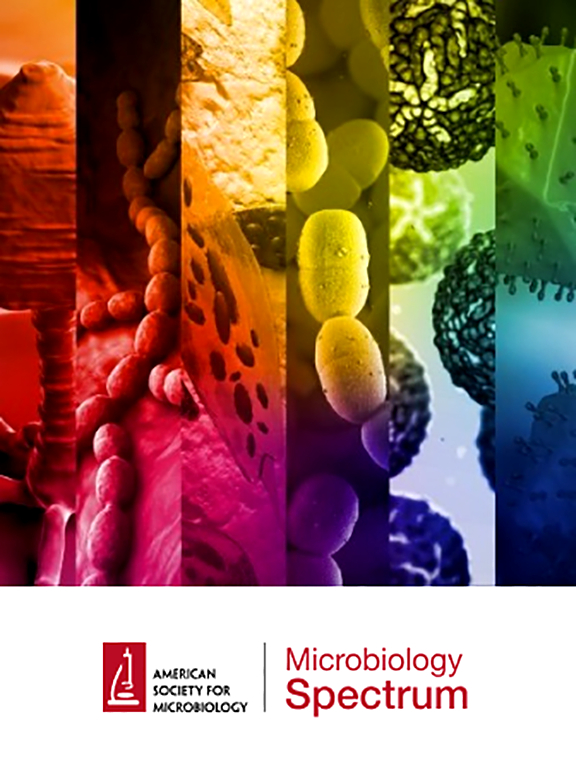
The Effect of Oral Iron Supplementation on Gut Microbial Composition: a Secondary Analysis of a Double-Blind, Randomized Controlled Trial among Cambodian Women of Reproductive Age
2023 Jun 15 Microbiology Spectrum Finlayson-Trick E, Nearing J, Fischer JAJ, Ma Y, Wang S, Krouen H, et al.
Randomised Controlled Trial Iron DeficiencyIron supplementation with ferrous bisglycinate in Cambodian women of reproductive age may increase the abundance of certain bacteria, including potential enteric pathogens.
Research insights are moderated by the Research Hub team and offer an at-a-glance overview of interesting research findings.

2024 Nutrition Journal
Higher consumption of ultra-processed food by pregnant women was linked to an increased risk of infantile atopic dermatitis within the first year of life.
Cohort Study Eczema Ultra-Processed Foods
Association of maternal ultra-processed food consumption during pregnancy with atopic dermatitis in infancy: Korean Mothers and Children’s Environmental Health (MOCEH) study
Jang W, Kim M, Ha E, Kim H

2023 Heliyon
Qi Shen Tang, a traditional Chinese medicine, was found to suppress retinal cell death in retinitis pigmentosa by inhibiting a process called ferroptosis.
Experimental Study Ferroptosis Qi Shen Tang Retinitis Pigmentosa
Qi-Shen-Tang alleviates retinitis pigmentosa by inhibiting ferroptotic features via the NRF2/GPX4 signaling pathway
Xiong M, Ou C, Yu C, Qiu J, Lu J, Fu C, et al.

2023 Journal of Ethnopharmacology
The herbal decoction Jian-Pi-Yi-Shen reduces symptoms of chronic kidney disease and anaemia by improving iron metabolism and inhibiting the JAK2-STAT3 signaling pathway.
Experimental Study Anaemia Chronic Kidney Disease Jian Pi Yi Shen Formula
Jian-Pi-Yi-Shen formula restores iron metabolism from dysregulation in anemic rats with adenine-induced nephropathy
Li C, Huang H, Wang R, Zhang C, Huang S, Wu J, et al.

2023 The Journal of Nutrition
A lower dose of iron amino acid chelate was not as effective as the standard iron salts dose in increasing ferritin levels in a predominantly iron-replete female Cambodian population.
Clinical Study Iron Deficiency
Is a Lower Dose of More Bioavailable Iron (18-mg Ferrous Bisglycinate) Noninferior to 60-mg Ferrous Sulfate in Increasing Ferritin Concentrations While Reducing Gut Inflammation and Enteropathogen Detection in Cambodian Women? A Randomized Controlled Noni
Fischer JAJ, Pei LX, Elango R, Hou K, Goldfarb DM, Karakochuk CD

2023 Microbiology Spectrum
Iron supplementation with ferrous bisglycinate in Cambodian women of reproductive age may increase the abundance of certain bacteria, including potential enteric pathogens.
Randomised Controlled Trial Iron Deficiency
The Effect of Oral Iron Supplementation on Gut Microbial Composition: a Secondary Analysis of a Double-Blind, Randomized Controlled Trial among Cambodian Women of Reproductive Age
Finlayson-Trick E, Nearing J, Fischer JAJ, Ma Y, Wang S, Krouen H, et al.
Review Articles
Review articles summarise and critically evaluate the current state of research on a specific topic or field by synthesising multiple primary research studies.
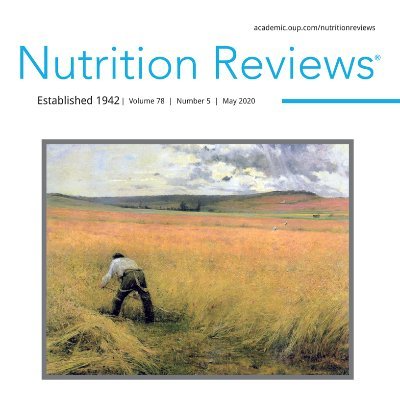
The effects of oral ferrous bisglycinate supplementation on hemoglobin and ferritin concentrations in adults and children: a systematic review and meta-analysis of randomized controlled trials
2023 Feb 02 Nutrition Reviews Fischer JAJ, Cherian AM, Bone JN, Karakochuk CD
Meta-Analysis Systematic Review Iron DeficiencyFerrous bisglycinate, an innovative amino acid iron chelate, showed increased absorption and fewer gastrointestinal side effects when used as an iron supplement in pregnant women.
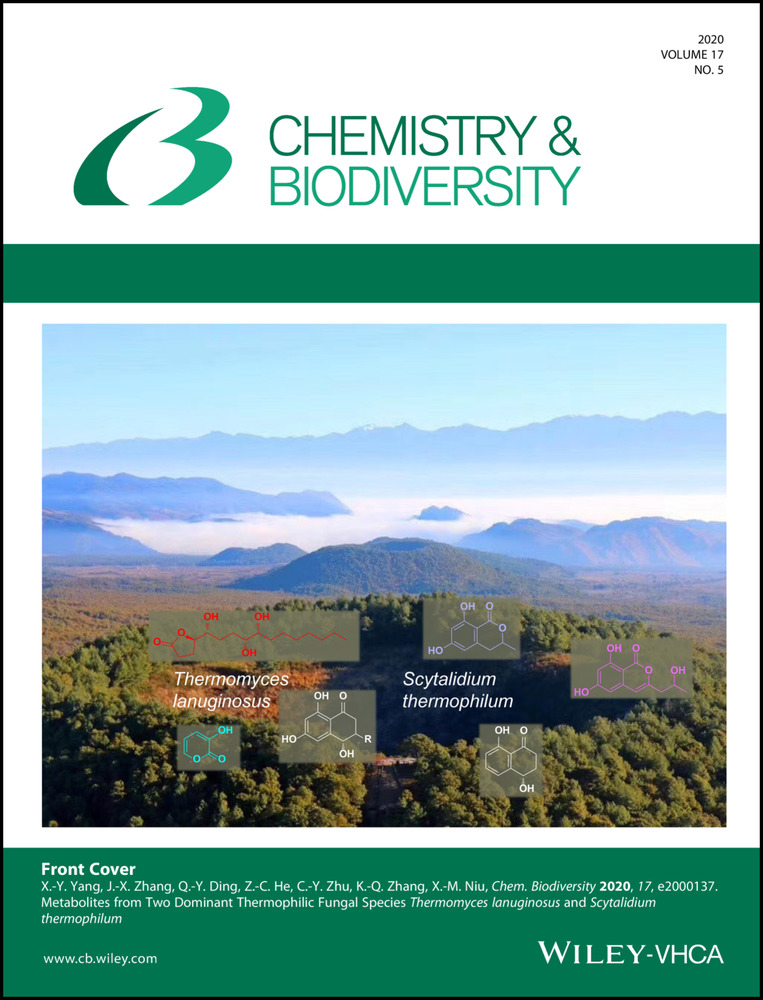
Phytochemicals and Biological Activities of Burdock ( Arctium lappa L.) Extracts: A Review
2022 Nov Chemistry & Biodiversity de Souza ARC, de Oliveira TL, Fontana PD, Carneiro MC, Corazza ML, de Messias Reason IJ, et al.
Studies have demonstrated that A. lappa extracts have antioxidant, antimicrobial, antitumor, antidiabetic, anti-inflammatory, and have complement system modulation effects. Secondary metabolites, such as phenolic compounds and terpenes, were identified as responsible for these biological activities. The relevant antitumor and anti-inflammatory effects of lignans (arctigenin, arctiin, lappaol) and sesquiterpene onopordopicrin were also highlighted in this review due to their significant therapeutic potential in the treatment of inflammatory disorders and cancer.
Review Article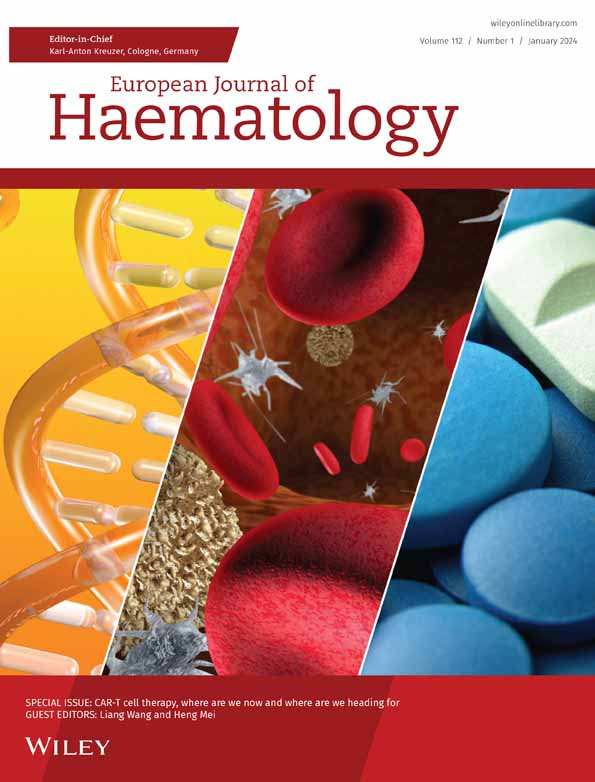
The role of oral iron in the treatment of adults with iron deficiency
2022 Nov 20 European Journal of Haematology Lo JO, Benson AE, Martens KL, Hedges MA, McMurry HS, DeLoughery T, et al.
Theoretical Article Review Article Iron DeficiencyThe hepcidin-ferroportin iron regulatory pathway prevents iron overload, creating an inherent limit on gastrointestinal iron absorption, and hence affects the efficacy of oral iron supplementation.
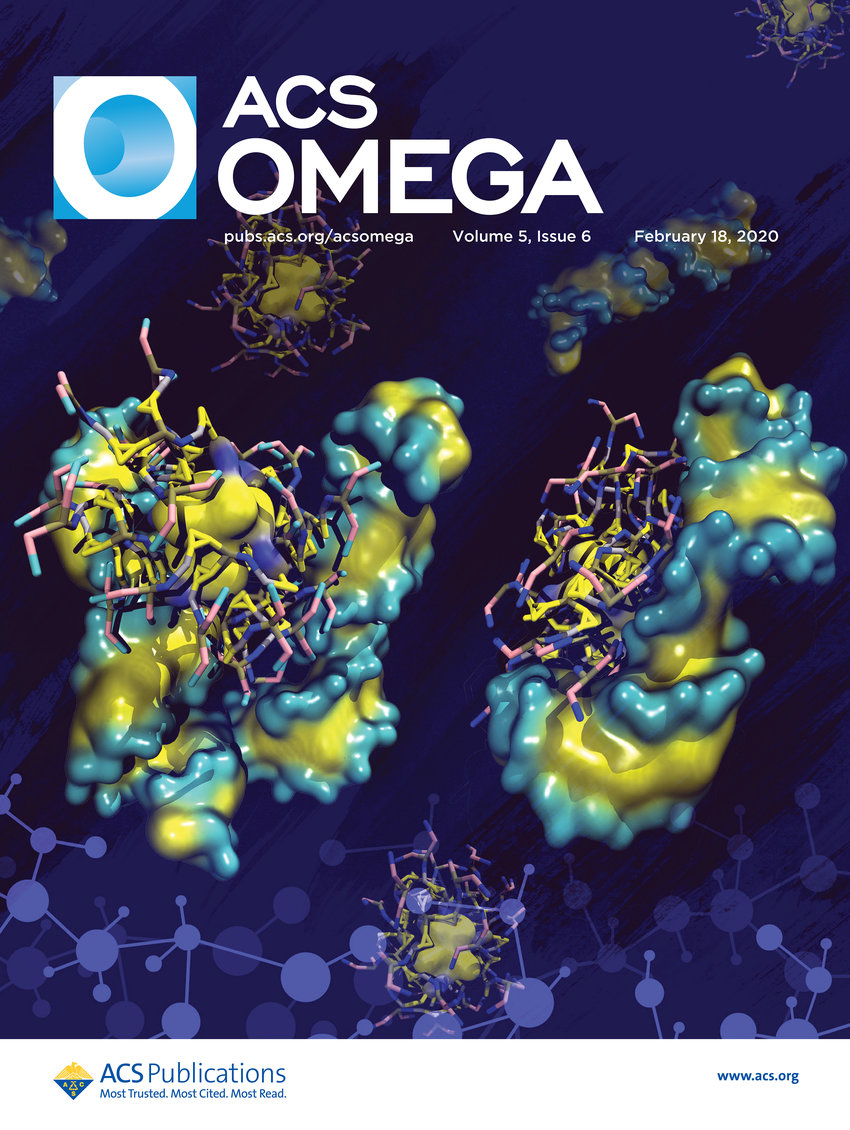
Iron Absorption: Factors, Limitations, and Improvement Methods
2022 Jun 10 ACS Omega Piskin E, Cianciosi D, Gulec S, Tomas M, Capanoglu E
In this context, the importance of studies to increase iron bioavailability is indisputable. Encapsulation, emulsification, chelation, and fortification play an important role in increasing the bioavailability and absorption rate of iron. Commercial iron supplements are available for humans suffering from IDA or wishing to get iron as a supplement. However, because of the free iron-dependent radical generation, some of the commercial iron supplements may produce adverse effects in the gut lumen and mucosal area of the intestine.
Review Article Iron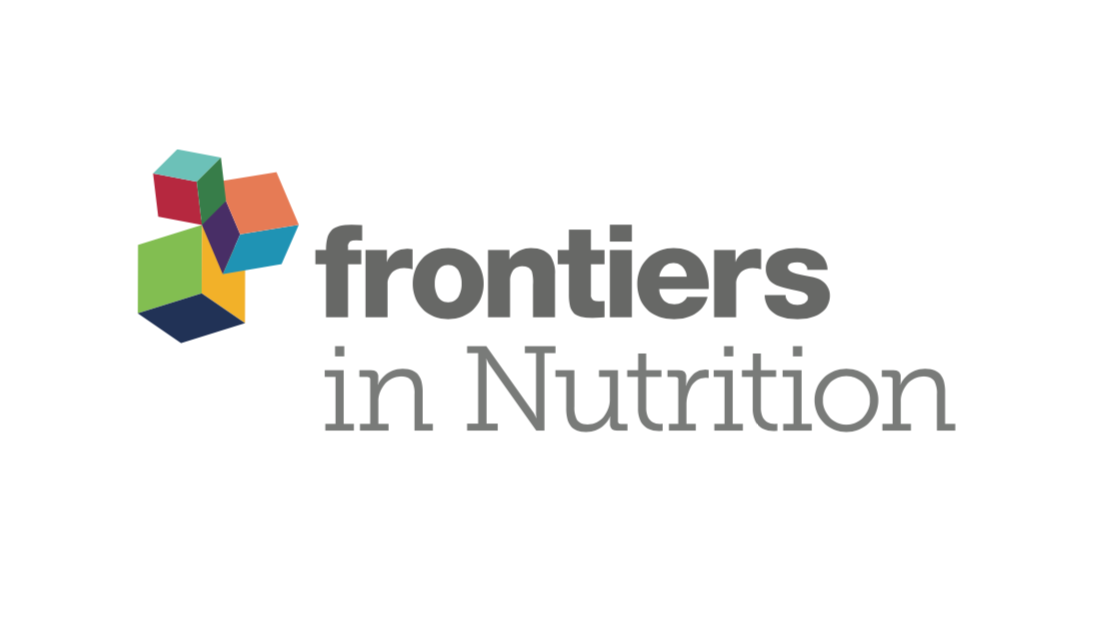
The Mediterranean and Nordic Diet: A Review of Differences and Similarities of Two Sustainable, Health-Promoting Dietary Patterns
2021 Jun 25 Frontiers in Nutrition Krznarić , Karas I, Ljubas Kelečić D, Vranešić Bender D
The main difference between the two diets lies in their primary fat sources, with olive oil being synonymous with the MD and rapeseed/canola oil being more prevalent in the ND. Longitudinal epidemiological studies support the MD as a preventive measure against chronic diseases, while the ND requires further research due to discrepant results. Nevertheless, studies suggest that both diets may be associated with lower risks of chronic diseases, disability, and mortality. Future longitudinal and large prospective studies are needed to provide more evidence-based recommendations.
Review ArticleClinical Trials
Clinical trials are research studies that involve people and are conducted to evaluate the safety and efficacy of new treatments or interventions, such as drugs, medical devices, or behavioural therapies.

Is a Lower Dose of More Bioavailable Iron (18-mg Ferrous Bisglycinate) Noninferior to 60-mg Ferrous Sulfate in Increasing Ferritin Concentrations While Reducing Gut Inflammation and Enteropathogen Detection in Cambodian Women? A Randomized Controlled Noni
2023 Aug The Journal of Nutrition Fischer JAJ, Pei LX, Elango R, Hou K, Goldfarb DM, Karakochuk CD
Clinical Study Randomised Controlled Trial Iron DeficiencyA lower dose of iron amino acid chelate was not as effective as the standard iron salts dose in increasing ferritin levels in a predominantly iron-replete female Cambodian population.

The Effect of Oral Iron Supplementation on Gut Microbial Composition: a Secondary Analysis of a Double-Blind, Randomized Controlled Trial among Cambodian Women of Reproductive Age
2023 Jun 15 Microbiology Spectrum Finlayson-Trick E, Nearing J, Fischer JAJ, Ma Y, Wang S, Krouen H, et al.
Randomised Controlled Trial Iron DeficiencyIron supplementation with ferrous bisglycinate in Cambodian women of reproductive age may increase the abundance of certain bacteria, including potential enteric pathogens.

Manufacture and Evaluation of Novel Chocolate for Girls' Dysmenorrhea
2023 Mar 01 Journal of Food and Dairy Sciences Shalaby, A, Moawad O, Mostafa M
Randomised Controlled Trial Dark Chocolate Iron Field Mint CinnamonCinnamon, ginger, and mint enhanced chocolates effectively reduce menstrual pain and improve blood iron levels without increasing body weight or negatively affecting cholesterol.
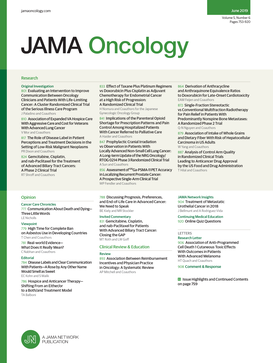
The Efficacy and Safety of Vitamin C for Iron Supplementation in Adult Patients With Iron Deficiency Anemia
2020 Nov 02 JAMA Oncology Li N, Zhao G, Wu W, Zhang M, Liu W, Chen Q, et al.
Among patients with IDA, oral iron supplements alone were equivalent to oral iron supplements plus vitamin C in improving hemoglobin recovery and iron absorption. These findings suggest that on-demand vitamin C supplements are not essential to take along with oral iron supplements for patients with IDA.
Randomised Controlled Trial Anaemia Iron Deficiency Anaemia Vitamin C
Efficacy of Hijamat (wet cupping therapy) in Iranian patients with nonalcoholic fatty liver disease: a controlled clinical trial
2020 Apr 9 Turkish Journal of Medical Sciences Bashiri H, Bozorgomid A, Shojaeimotlagh V.
Randomised Controlled TrialStudy Protocols
Published study protocols are detailed plans that outline the objectives, methodology, statistical analyses, and organisation of a research study that have been made publicly available for others to review and use as a reference.
Presentation Slides

Cohort Study
Higher consumption of ultra-processed food by pregnant women was linked to an increased risk of infantile atopic dermatitis within the first year of life.
Jang W, Kim M, Ha E, Kim H

Experimental Study
Qi Shen Tang, a traditional Chinese medicine, was found to suppress retinal cell death in retinitis pigmentosa by inhibiting a process called ferroptosis.
Xiong M, Ou C, Yu C, Qiu J, Lu J, Fu C, Peng Q, Zeng M, Song H

Experimental Study
The herbal decoction Jian-Pi-Yi-Shen reduces symptoms of chronic kidney disease and anaemia by improving iron metabolism and inhibiting the JAK2-STAT3 signaling pathway.
Li C, Huang H, Wang R, Zhang C, Huang S, Wu J, Mo P, Yu H, Li S, Chen J

Clinical Study
A lower dose of iron amino acid chelate was not as effective as the standard iron salts dose in increasing ferritin levels in a predominantly iron-replete female Cambodian population.
Fischer JAJ, Pei LX, Elango R, Hou K, Goldfarb DM, Karakochuk CD

Randomised Controlled Trial
Iron supplementation with ferrous bisglycinate in Cambodian women of reproductive age may increase the abundance of certain bacteria, including potential enteric pathogens.
Finlayson-Trick E, Nearing J, Fischer JAJ, Ma Y, Wang S, Krouen H, Goldfarb DM, Karakochuk CD

Randomised Controlled Trial
Cinnamon, ginger, and mint enhanced chocolates effectively reduce menstrual pain and improve blood iron levels without increasing body weight or negatively affecting cholesterol.
Shalaby, A, Moawad O, Mostafa M

Meta-Analysis
Ferrous bisglycinate, an innovative amino acid iron chelate, showed increased absorption and fewer gastrointestinal side effects when used as an iron supplement in pregnant women.
Fischer JAJ, Cherian AM, Bone JN, Karakochuk CD

Theoretical Article
The hepcidin-ferroportin iron regulatory pathway prevents iron overload, creating an inherent limit on gastrointestinal iron absorption, and hence affects the efficacy of oral iron supplementation.
Lo JO, Benson AE, Martens KL, Hedges MA, McMurry HS, DeLoughery T, Aslan JE, Shatzel JJ
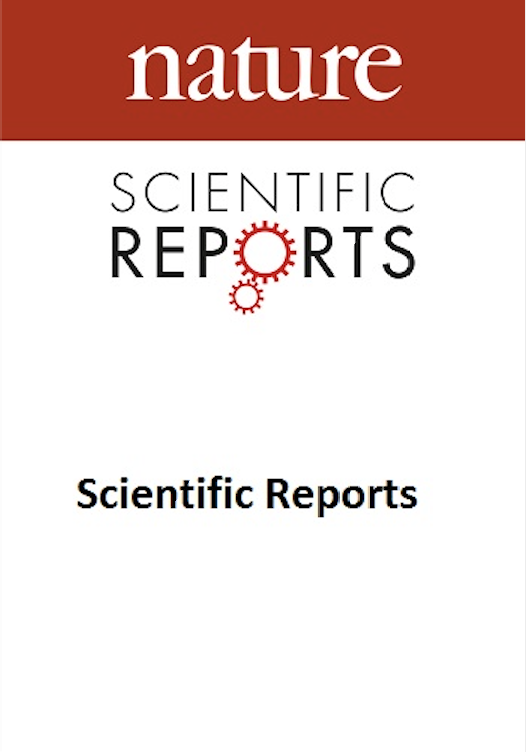
Experimental Study
Iron deficiency promotes a shift towards a more glycolytic metabolism, without detectable effect on mitochondrial bioenergetics, which can be corrected with iron supplements.
Frise MC, Holdsworth DA, Johnson AW, Chung YJ, Curtis MK, Cox PJ, Clarke K, Tyler DJ, Roberts DJ, Ratcliffe PJ, Dorrington KL, Robbins PA
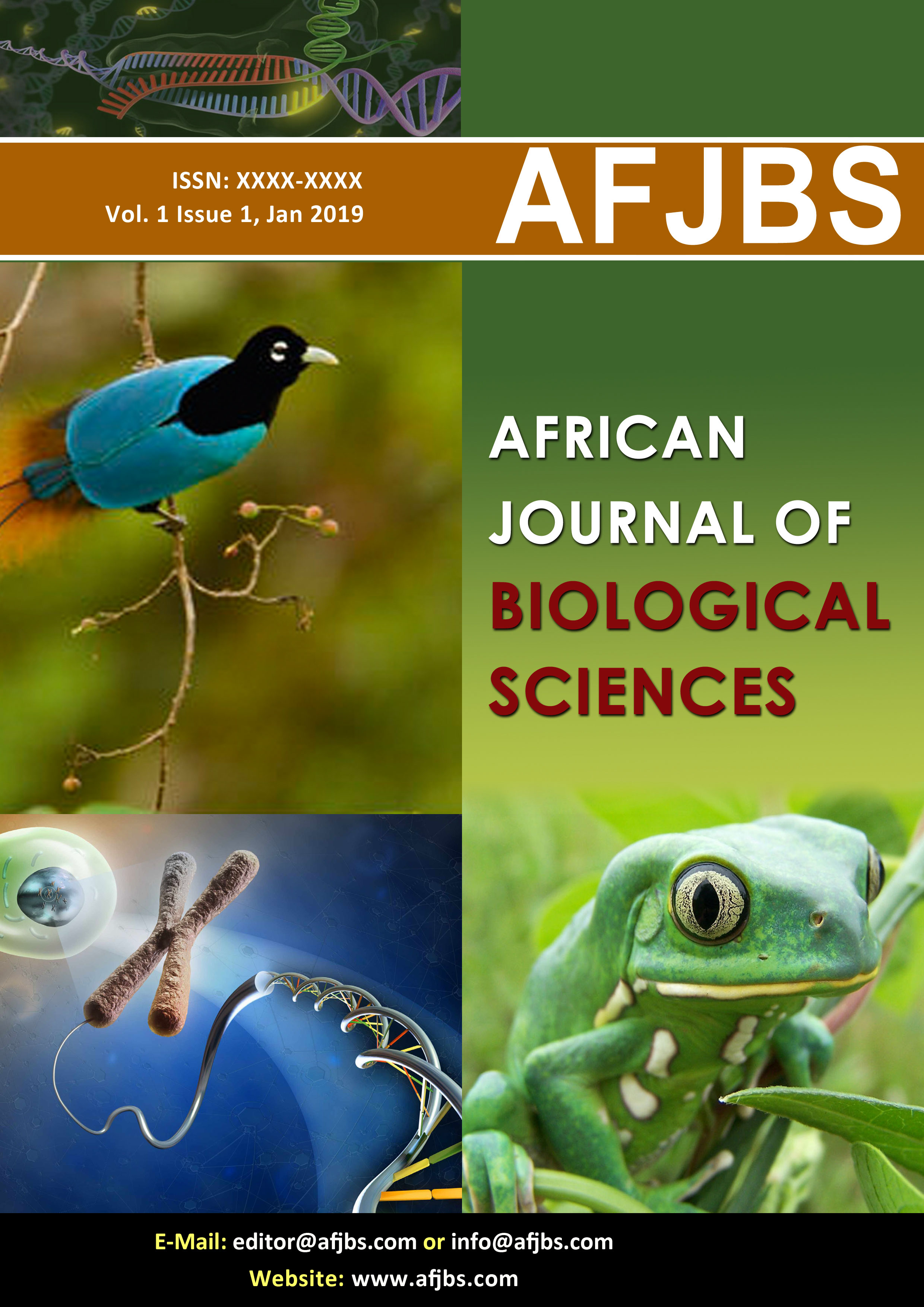
Clinical Study
Consumption of pumpkin seeds enhances the nutritional status and improves the attention deficit of deaf female children exhibiting ADHD symptoms.
Ataya H

Cohort Study
The body begins to upregulate iron absorption at a ferritin concentration of less than 50 µg/L, indicating an incipient iron deficiency in young women.
Galetti V, Stoffel NU, Sieber C, Zeder C, Moretti D, Zimmermann MB

Experimental Study
Black pepper and its major component, piperine, can effectively regulate anemia of inflammation by reducing the overexpression of hepcidin, a hormone that controls iron levels.
Banerjee S, Katiyar P, Kumar L, Kumar V, Saini SS, Krishnan V, Sircar D, Roy P
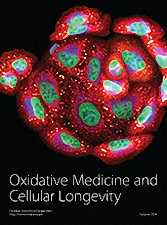
Experimental Study
Dandelion polysaccharide (DP) can potentially reduce iron overload in hepatocellular carcinoma (HCC) by downregulating hepcidin levels and inhibiting the IL-6-activated JAK-STAT signaling pathway.
Ren F, Yang Y, Wu K, Zhao T, Shi Y, Song M, Li J

Review Article
Flavonoids from jujube have been found to stimulate the expression of erythropoietin (EPO), a hormone stimulating blood production.
Chen J, Tsim KWK

Review Article
Recent studies have indicated that jujube possesses a wide range of pharmacological activities in nervous system, cardiovascular system, as well as anti-oxidation and anti-cancer properties.
Chen J, Tsim KWK

Animal Study
Jian-Pi-Yi-Shen, a traditional Chinese medicine, helps treat anemia in chronic kidney disease by stimulating erythropoietin production and regulating iron recycling.
Wang F, Yu H, Huang S, Zheng L, Zheng P, Zhang S, Li S, Chen J

Review Article
Black pepper, particularly the piperine it contains, enhances the absorption of iron, potentially improving athletic performance in endurance sports.
Fernández-Lázaro D, Mielgo-Ayuso J, Córdova Martínez A, Seco-Calvo J
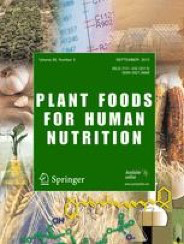
Experimental Study
Pomegranate juice has potential beyond ascorbic acid alone in enhancing iron absorption and assimilation, supporting Ayurveda's proposition of managing iron deficiency anemia with pomegranate.
Balasubramani SP, Varghese RK, Vishnuprasad CN, Venkatasubramanian P

Review Article
Chinese herbal compounds can potentially treat cholelithiasis by improving biliary dynamics, protecting liver function, reducing cholesterol, and managing inflammation.
Chen Q, Zhang Y, Li S, Chen S, Lin X, Li C, Asakawa T

Experimental Study
Danggui Buxue Tang (DBT) supplement helps reduce running times and control exercise-induced hepcidin levels, boosting iron levels and speeding up iron balance during recovery.
Chang CW, Chen CY, Yen CC, Wu YT, Hsu MC

Experimental Study
Higher iron levels after menopause appear to be risk factors for osteoporosis, and hormone hepcidin, which regulates iron, might be a potential therapeutic target for this condition.
Zhang P, Wang S, Wang L, Shan BC, Zhang H, Yang F, Zhou ZQ, Wang X, Yuan Y, Xu YJ

Meta-Analysis
Children with attention-deficit hyperactivity disorder are found to have lower ferritin levels and are more likely to have iron deficiency.
Tseng PT, Cheng YS, Yen CF, Chen YW, Stubbs B, Whiteley P, Carvalho AF, Li DJ, Chen TY, Yang WC, Tang CH, Chu CS, Yang WC, Liang HY, Wu CK, Lin PY
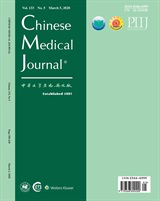
Randomised Controlled Trial
Acupuncture used for weight loss may increase the effectiveness of oral iron supplementation to treat obesity-related iron deficiency.
Xie XC, Cao YQ, Gao Q, Wang C, Li M, Wei SG

Experimental Study
Angelica Sinensis polysaccharide treatment has been found to effectively alleviate anaemia of chronic disease in rats by inhibiting inflammatory pathways and mobilizing iron.
Wang K, Wu J, Cheng F, Huang X, Zeng F, Zhang Y

Experimental Study
Astragalus Polysaccharide (APS) can potentially be used as a treatment for iron overload in thalassemia patients by promoting the production of hepcidin.
Ren F, Qian XH, Qian XL

Experimental Study
Iron supplements intake acutely elevates hepcidin levels, decreasing the subsequent iron absorption with lower dosages and alternate day supplementation maximizing absorption.
Moretti D, Goede JS, Zeder C, Jiskra M, Chatzinakou V, Tjalsma H, Melse-Boonstra A, Brittenham G, Swinkels DW, Zimmermann MB

Review Article
Consuming a diverse mix of dietary measures enhances iron absorption more effectively than focusing on single nutrients or foods, especially in young women.
Beck K, Conlon C, Kruger R, Coad J
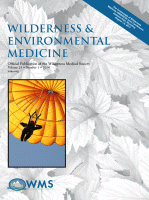
Review Article
Honey has shown to be a safe and occasionally superior treatment for various wounds compared to current treatments, even in wilderness environments.
Stewart JA, McGrane OL, Wedmore IS
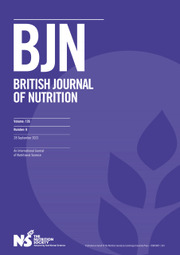
Experimental Study
Black soyabean seed coat extract significantly decreases hepcidin expression, leading to improved iron metabolism and potential treatment for iron-deficiency anaemia.
Mu M, Wu A, An P, Du X, Wu Q, Shen X, Wang F
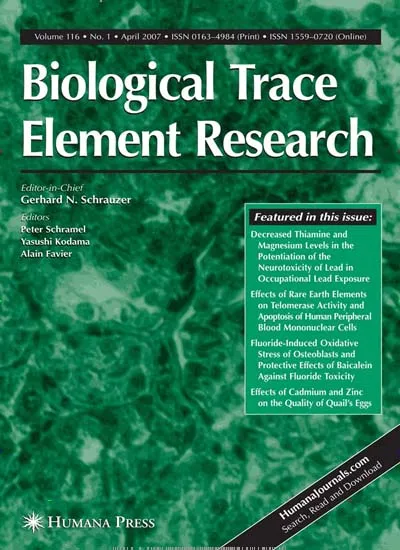
Experimental Study
Heme iron and non-heme iron, presented as ferrous sulfate, do not compete for absorption when ingested on an empty stomach.
Gaitán D, Olivares M, Lönnerdal B, Brito A, Pizarro F
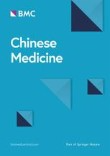
Systematic Review
Long-term consumption of tea catechins could be beneficial against high-fat diet-induced obesity and type II diabetes and could reduce the risk of coronary disease.
Chacko, S.M., Thambi, P.T., Kuttan, R. et al.

Experimental Study
Bovine meats exhibit low variations in total iron content, with more than 60% of it consisting of heme iron.
Valenzuela C, López de Romaña D, Olivares M, Morales MS, Pizarro F
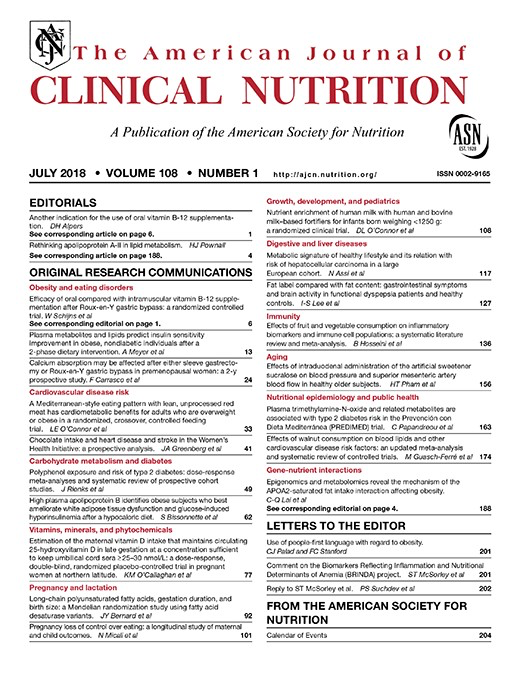
Randomised Controlled Trial
Healthy individuals, including those with low iron stores, show reduced nonheme-iron absorption after iron supplementation, leading to larger iron stores that are sustained over time.
Roughead ZK, Hunt JR
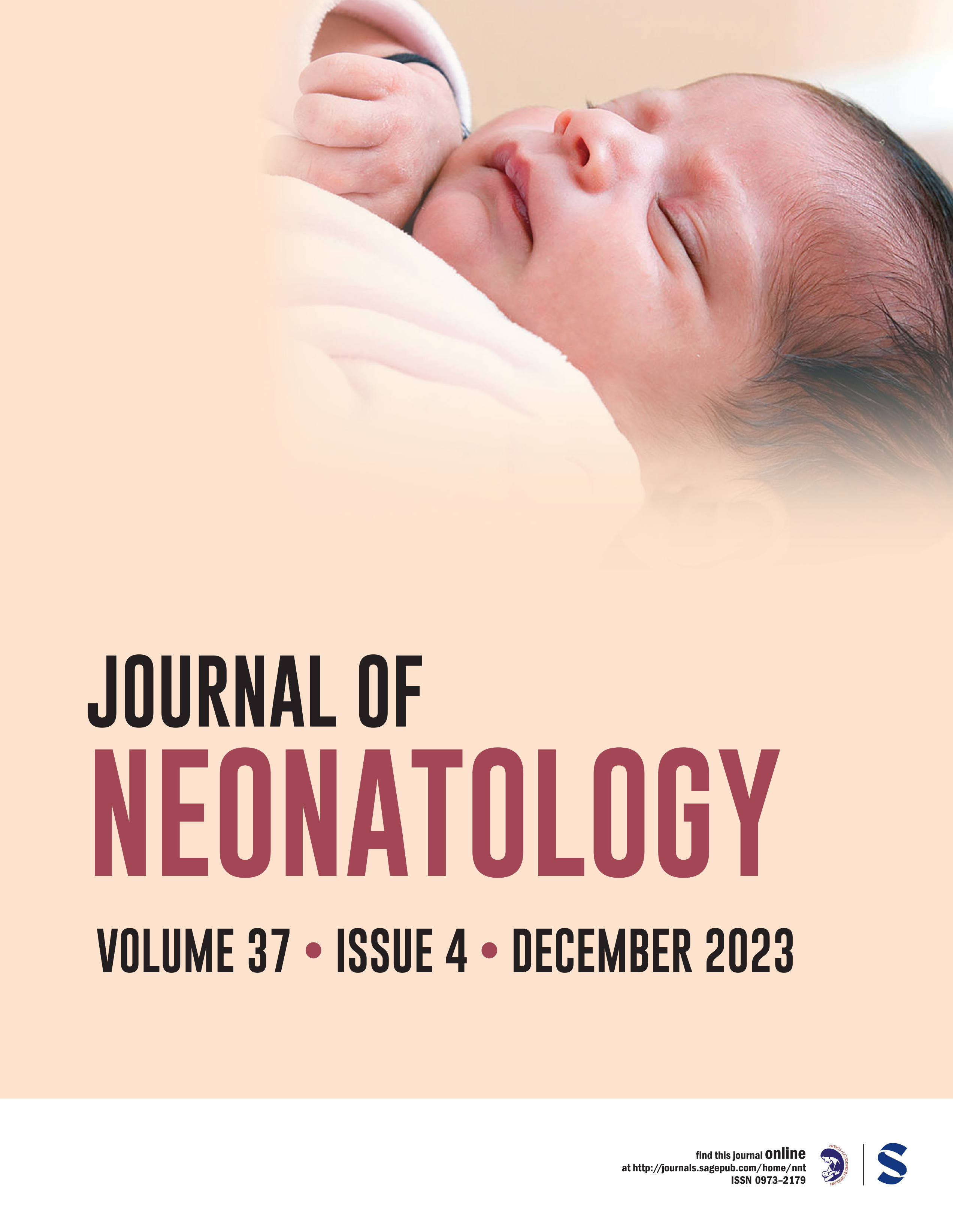
Clinical Study
Female neonates show significantly higher cord serum ferritin concentrations than male neonates, and this difference is crucial when assessing their iron nutriture post-birth.
Tamura T, Hou J, Goldenberg RL, Johnston KE, Cliver SP
Executive Summary
Write an executive summary in the form of a blog article on the topic of "Research into Chinese medicine treatment for Iron" summarising the research below and using language that can be easily understood by patients and avoiding medical jargon using a professional and caring tone of voice.
Write an executive summary in the form of a blog article on the topic of "Researched Chinese medicine treatments for Iron" summarising the research below in an objective and easy to understand way, and using language that can be easily understood by patients. Group the article into Chinese medicine treatments first, followed by nutrition and other treatments. Avoid using medical jargon and use a professional and caring tone of voice.
Write me a concise but easy to understand executive summary on the topic of "Chinese medicine treatments for Iron" based on the following research that I will give you. Your summary should be 2 paragraphs long in Australian English spelling and include references to the studies.
A Cohort Study published in 2024 in the journal Nutrition Journal found that Higher consumption of ultra-processed food by pregnant women was linked to an increased risk of infantile atopic dermatitis within the first year of life. The research used 861 pairs of pregnant women and their offspring from the Mothers' and Children's Environmental Health project in Korea. These women’s dietary intake was measured using the 24-hour recall method during 12-28 weeks gestation. Foods were classified as ultra-processed following the NOVA classification and their consumption was calculated as the proportion of total energy intake, with participants categorized into quartiles. The prevalence of infantile atopic dermatitis was assessed based on their medical histories and according to the International Study of Asthma and Allergies in Childhood criteria. The results revealed that children born to mothers in the highest quartile of ultra-processed food consumption, compared to the lowest quartile, showed a higher risk towards atopic dermatitis within 12 months. This relationship became stronger after adjusting for certain confounding variables. Additionally, the link stayed consistent even after adjusting based on the Korean Healthy Eating Index, which measures diet quality.
A Experimental Study published in 2023 in the journal Heliyon found that Qi Shen Tang, a traditional Chinese medicine, was found to suppress retinal cell death in retinitis pigmentosa by inhibiting a process called ferroptosis. The researchers investigated the potential mechanism of Qi-Shen-Tang (QST), a combination of two traditional Chinese medicines, on retinitis pigmentosa, an eye disease. They induced a retinitis pigmentosa model in mice while subsequently treating them with QST. They then examined the impact of the medicine on the tissue morphology and function of the retina in these model mice, in addition to monitoring factors such as retinal blood flow and fundus structure. The study found that the treatment with QST led to notable improvements in the retinal tissue morphology and function. In addition, they observed an increase in retinal blood flow and normalization of the fundus structure. Following the treatment, the amounts of iron and malondialdehyde in the retinal tissue were significantly reduced, while the levels of superoxide dismutase, glutathione, and the protein expressions of various enzymes significantly increased. Molecular docking results also revealed potential interactions between the components of QST and key proteins of a particular signaling pathway, namely the Nuclear factor erythroid 2-related factor 2/ Glutathione peroxidase 4 pathway. The results suggest that QST may inhibit ferroptosis by suppressing this signaling pathway, thereby mitigating retinitis pigmentosa-induced damage to the retinal tissue.
A Experimental Study published in 2023 in the journal Journal of Ethnopharmacology found that The herbal decoction Jian-Pi-Yi-Shen reduces symptoms of chronic kidney disease and anaemia by improving iron metabolism and inhibiting the JAK2-STAT3 signaling pathway. Methodology used included an analysis of network pharmacology, chemical profiling, and in vivo experiments on the effect of Jian-Pi-Yi-Shen (JPYS) on renal anemia and chronic kidney disease (CKD). The active compounds in JPYS were detected in in vivo experiment, and their potential targets were predicted by network pharmacology. An animal model of CKD-related anemia was developed using adenine-feeding for further analysis. The estimation of renal injury was conducted using blood tests, histopathological examinations, and fibrosis degree assessment while the levels of JAK2, STAT3 and iron metabolism-related factors were measured through various techniques. Discussion of the results reveals that 164 active ingredients, including prototypes and metabolites in JPYS, were discovered and 21 core targets were identified. Many of these core targets were associated with the JAK2-STAT3 signaling pathways. Experimental results demonstrated that JPYS treatment significantly improved hematological parameters and iron metabolism in CKD rats, decreased certain indicators of renal damage, and suppressed the expression of JAK2 and STAT3.
A Clinical Study published in 2023 in the journal The Journal of Nutrition found that A lower dose of iron amino acid chelate was not as effective as the standard iron salts dose in increasing ferritin levels in a predominantly iron-replete female Cambodian population. The research used a double-blind, randomized placebo-controlled noninferiority trial conducted in Cambodia. Participating nonpregnant women, aged 18-45, were randomly assigned either 60mg ferrous sulfate, 18mg ferrous bisglycinate or a placebo for 12 weeks. Baseline and 12-week post blood and fecal samples were collected from the participants and used to measure ferritin and fecal calprotectin levels as well as to detect the presence of enteropathogens. The study found that mean ferritin concentration was higher at 12 weeks in those receiving ferrous sulfate dose compared to those receiving a lower dose of ferrous bisglycinate and a placebo. No significant changes were observed across the groups in terms of fecal calprotectin concentrations or detection of enteropathogens. Therefore, it was concluded that the 18mg dose of ferrous bisglycinate was not as effective as the 60mg ferrous sulfate dose in increasing ferritin concentrations.
A Randomised Controlled Trial published in 2023 in the journal Microbiology Spectrum found that Iron supplementation with ferrous bisglycinate in Cambodian women of reproductive age may increase the abundance of certain bacteria, including potential enteric pathogens. The study involved a secondary analysis of a double-blinded, randomized controlled trial examining the impact of two different oral iron supplements, ferrous sulfate and ferrous bisglycinate, or placebo on the gut microbiomes in Cambodian women of reproductive age (WRA) over a period of 12 weeks. Stool samples were provided by the participants at the beginning and end of the study for gut microbial analysis. This analysis consisted of 16S rRNA gene sequencing and targeted real-time PCR. In terms of results, it was found that iron supplementation did not significantly change the overall diversity of the gut microbiome in these predominantly iron-replete Cambodian WRA. However, ferrous bisglycinate did lead to an increase in the relative abundance of and showed a trend of an increase for another strain of bacteria, Escherichia. Furthermore, the presence of a virulence gene associated with enteropathogenic Escherichia coli was detected in a greater quantity in the stool samples of those who took ferrous sulfate. This suggests that while the overall biodiversity of the gut microbiome remained stable, certain potential pathogen-associated bacterial populations may have increased due to the iron supplementation.
A Randomised Controlled Trial published in 2023 in the journal Journal of Food and Dairy Sciences found that Cinnamon, ginger, and mint enhanced chocolates effectively reduce menstrual pain and improve blood iron levels without increasing body weight or negatively affecting cholesterol. The methodology of the study involved a sample of 48 female student volunteers, aged 18-25, from Mansoura University who were experiencing dysmenorrhea. These volunteers were divided into eight groups of six and each group was given a different type of chocolate: regular chocolate, chocolate without herbal powder, chocolate with cinnamon powder, chocolate with cinnamon oil, chocolate with ginger powder, chocolate with ginger oil, chocolate with mint powder, and chocolate with mint oil. Discussion of the results demonstrated that the consumption of chocolates supplemented with cinnamon, ginger, and mint powders and their respective essential oils led to a significant improvement in participants' hemoglobin scores compared to a control group which consumed normal chocolate. Furthermore, it was found that these chocolates had a positive influence on serum total cholesterol, triglycerides, high-density lipoprotein, and low-density lipoprotein scores. Importantly, chocolate consumption did not lead to an increase in the participants' body mass index, proving that these chocolate variants could reduce menstrual pain and lift blood iron levels without instigating weight gain or having adverse effects on cholesterol levels.
A Meta-Analysis published in 2023 in the journal Nutrition Reviews found that Ferrous bisglycinate, an innovative amino acid iron chelate, showed increased absorption and fewer gastrointestinal side effects when used as an iron supplement in pregnant women. Methodology: The team carried out a systematic review and meta-analysis of randomized controlled trials (RCTs) through a comprehensive survey of electronic databases and grey literature up to July 17, 2020, to ascertain the impacts of ferrous bisglycinate versus other iron supplements on hemoglobin and ferritin levels and gastrointestinal (GI) adverse events. Exercises were undertaken to calculate averages from these trials which involved pregnant women and children and these average estimates were communicated as standardized mean differences. The rate of occurrence for GI adverse events was determined using Poisson generalized linear mixed-effects models. Studies involving other subjects (men and non-pregnant women) were evaluated on an individual basis. Discussion of Results: The results reveal fermentable bisglycinate demonstrating an advantage over other iron supplements. Among the pregnant women involved in the trials, those using this supplement had higher hemoglobin levels after 4-20 weeks of administration. Additionally, these women reported reduced GI adverse events. Although the observed increase in ferritin levels was not marked as significant, it depicted an upward trend. However, no notable differences were detected in either hemoglobin or ferritin concentrations in children using ferrous bisglycinate.
A Theoretical Article published in 2022 in the journal European Journal of Haematology found that The hepcidin-ferroportin iron regulatory pathway prevents iron overload, creating an inherent limit on gastrointestinal iron absorption, and hence affects the efficacy of oral iron supplementation. The methodology adopted in this study involved investigating the pathophysiology of iron absorption alongside reviewing existing evidence relating to different preparations of oral iron. Different dosing protocols were compared, including daily low dose and every other day protocols, in an attempt to bypass the limitations imposed by the body's own regulatory systems and maximize absorption while minimizing side effects. The formulation, dosing strategy, and patient selection for oral vs. intravenous iron supplementation were also studied. The results demonstrated that the body's inherent iron regulation pathway, named the hepcidin-ferroportin pathway, has evolved to prevent iron overload, which subsequently places an inherent limit on gastrointestinal iron uptake; this has significant implications for the efficacy of oral iron supplementation. Furthermore, excess unabsorbed iron proved to be responsible for various side effects often associated with oral iron supplementation, such as dyspepsia and constipation. This underlines the challenges posed by the body's own iron management system when dealing with iron deficiency through oral iron supplements.
A Experimental Study published in 2022 in the journal Scientific Reports found that Iron deficiency promotes a shift towards a more glycolytic metabolism, without detectable effect on mitochondrial bioenergetics, which can be corrected with iron supplements. The methodology of this prospective, case-control, clinical physiology study involved two series of testing. Thirteen iron-deficient individuals and thirteen iron-replete control participants were chosen for the study, and they underwent P-magnetic resonance spectroscopy of their exercising calf muscles to investigate the differences in oxidative phosphorylation. This testing was followed by a whole-body cardiopulmonary exercise test. After these assessments, individuals were given an intravenous infusion, which was randomised to be either iron or saline. The results showed no significant influence of either baseline iron levels or the intravenous iron infusion on the high-energy phosphate metabolism. In the case of submaximal cardiopulmonary exercise, the rate of decline in blood lactate concentration was slower for the iron deficient group, which shows signs of abnormal energy metabolism on a whole-body level. Remarkably, this anomaly was corrected after an intravenous iron infusion. Furthermore, the intravenous iron also increased the lactate threshold during maximal cardiopulmonary exercise by around 10%, no matter what the baseline iron status of the individual was.
A Clinical Study published in 2021 in the journal African Journal of Biological Sciences found that Consumption of pumpkin seeds enhances the nutritional status and improves the attention deficit of deaf female children exhibiting ADHD symptoms. This study investigated 40 deaf female children, aged between 10 and 12 years, who exhibited symptoms of attention-deficit hyperactivity disorder (ADHD). These children were selected from El Amal school for the deaf and divided into two groups; control and experimental. Various data were gathered on personal and socio-economic factors, food habits, diet history, and clinical signs, along with performing the Attention Deficit Disorder Connected with Hyperactivity for Deaf Children test. The experimental group underwent a dietary intervention, consuming 50g of magnesium and iron-rich pumpkin seeds daily over three months. The results indicated an improvement in both iron and magnesium levels within the experimental group following the dietary intervention. Notably, compared to the control group, the levels of magnesium and iron were significantly higher in the experimental group after introducing pumpkin seeds into their diet. Furthermore, on evaluating the ADHD symptoms via the Attention Deficit Disorder Connected with Hyperactivity for Deaf Children test, the experimental group showed a more substantial improvement after dietary intervention than the control group. Over time, the findings demonstrated the potential beneficial effects of consuming pumpkin seeds on the nutritional status and ADHD symptoms in the studied population.
A Cohort Study published in 2021 in the journal EClinicalMedicine found that The body begins to upregulate iron absorption at a ferritin concentration of less than 50 µg/L, indicating an incipient iron deficiency in young women. In the methodology, this study utilizes a pooled analysis of stable iron isotope studies conducted between 2006 and 2019 on healthy women aged 18 to 50. These studies quantified iron absorption from meals providing physiological quantities of iron. A mathematical model known as generalized additive modeling was employed to ascertain the relationships between iron absorption, ferritin, and a molecule called hepcidin. By estimating the first derivatives of the trend created by the model, inflection points (or thresholds) in these relationships were established. The results revealed that hepcidin increased in a linear fashion parallel to ferritin. Iron absorption increased when hepcidin reached a threshold value and when a threshold ferritin value was detected, beyond which iron absorption remained stable. An auxiliary validation within the results found that a hepcidin of approximately 3 nmol/l corresponded to a ferritin level of approximately 51 µg/l. These findings collectively suggest that if the body's ferritin concentration falls below 50 µg/L—corresponding to a hepcidin level of less than 3 nmol/l—the body will respond by absorbing more iron from the diet, signaling an emerging iron deficiency.
A Experimental Study published in 2021 in the journal Free Radical Biology and Medicine found that Black pepper and its major component, piperine, can effectively regulate anemia of inflammation by reducing the overexpression of hepcidin, a hormone that controls iron levels. The study involves a two-tier investigation, first in vitro, and then in vivo. In the laboratory, different black pepper extracts were interacted with a human liver cell line known as HepG2, and the one derived from methanol (BPME) showed the most promising result because it reduced the transcription of the hepcidin gene significantly. In addition to BPME, piperine was proven to almost entirely suppress hepcidin protein expression at specific concentrations. In the subsequent in vivo experimentation, live mice were artificially induced with an elevated level of hepcidin through oil of turpentine injections. Then they were administered with BPME and piperine, the effects of which significantly reduced the enhanced hepcidin expression. The molecular interaction studies further suggest that piperine directly binds with SMAD1 and STAT3 proteins, the critical factors behind the overexpression of hepcidin. The study found a demonstrable downregulation in hepcidin expression with the use of both the methanol extract of black pepper and the bioactive alkaloid piperine. These substances also interacted with some proteins to lower the overexpression of hepcidin initiated by inflammation. Additionally, there was a noticeable increase in iron bioavailability in the liver of treated test animals, pointing to the potential of these compounds to rectify anemia of inflammation. The findings posited black pepper as a possible therapeutic option for managing this anemic condition.
A Experimental Study published in 2021 in the journal Oxidative Medicine and Cellular Longevity found that Dandelion polysaccharide (DP) can potentially reduce iron overload in hepatocellular carcinoma (HCC) by downregulating hepcidin levels and inhibiting the IL-6-activated JAK-STAT signaling pathway. In the study, researchers focused on clarifying the effects of dandelion polysaccharide (DP) on iron metabolism and the mechanisms underlying these effects. The basis of their study was earlier findings that indicated a correlation between iron overload and the risk of hepatocellular carcinoma (HCC), conditions that their previous studies showed could be managed with DP through causing cell cycle arrest and inhibiting the PI3K/AKT/mTOR pathway. To get their results, researchers used RNA sequencing and western blot testing on hepatoma cells and grafted tumors subjected to DP treatment. The results of the mentioned testing methods showed that DP could lower the iron burden in hepatoma cells. It was further discovered that DP had the ability influence hepcidin, a significant regulator in iron metabolism, expression levels. Hepcidin was found in higher levels in HCC tumor tissues compared to adjacent non-tumor tissues. But, with DP treatment, expression of hepcidin was downregulated in both hepatoma cells and the liver of the mouse model used. These findings led to the conclusion that the DP was effective in inhibiting the IL-6-activated JAK-STAT signaling pathway.
A Review Article published in 2020 in the journal Frontiers in Pharmacology found that Flavonoids from jujube have been found to stimulate the expression of erythropoietin (EPO), a hormone stimulating blood production. Jujube promotes erythropoiesis via activation of hypoxia inducible factor-induced erythropoietin, possesses potential capacity in recycling heme iron during erythrophagocytosis, exhibits bidirectional role in regulating immune response under different conditions, contains numerous minerals including iron.
A Review Article published in 2020 in the journal Frontiers in Pharmacology found that Recent studies have indicated that jujube possesses a wide range of pharmacological activities in nervous system, cardiovascular system, as well as anti-oxidation and anti-cancer properties. Traditionally in China, jujube is considered as a medicinal fruit that is being used in treating blood deficiency. In this review, the beneficial effects of jujubes on the hematopoietic functions are summarized and discussed. As illustrated in cell and animal models, the application of jujube extract possessed beneficial effects, including regulation of erythropoiesis via activation of hypoxia inducible factor-induced erythropoietin, potential capacity in recycling heme iron during erythrophagocytosis and bi-directional regulation of immune response. Thus, the blood-nourishing function of jujube is being proposed here. Flavonoid, polysaccharide and triterpenoid within jujube could serve as the potential active ingredients accounting for the aforementioned health benefits. Taken together, these findings provide several lines of evidence for further development of jujube as supplementary products for prevention and/or treatment of anemia.
A Animal Study published in 2020 in the journal Evidence-Based Complementary and Alternative Medicine found that Jian-Pi-Yi-Shen, a traditional Chinese medicine, helps treat anemia in chronic kidney disease by stimulating erythropoietin production and regulating iron recycling. To investigate the effect of Jian-Pi-Yi-Shen (JPYS), chronic kidney disease (CKD) was experimentally induced in rats using a 5/6 nephrectomy. The rats were then administered JPYS orally in both high and low doses for a period of 90 days. Observations were made regarding the serum hepcidin level to assess iron homeostasis. Additionally, the protein expressions of hypoxia inducible factor-2, erythropoietin, ferritin, ferroportin, and the phosphorylation level of extracellular signal-regulated kinase 1/2 were studied using Western blot analysis. The results showed that JPYS treatment significantly improved kidney function in the CKD rats. Alongside this, pathological kidney damage was found to be significantly restored post-JPYS treatment. The medicine was found to be effective in improving anemia in CKD through the upregulation of red blood cells, hemoglobin, and hematocrit levels. It was also discovered that JPYS stimulates the expressions of erythropoietin and hypoxia-inducible factor-2 proteins in the kidney and liver of the CKD rats, while inducing the phosphorylation of extracellular signal-regulated kinase 1/2 proteins. Furthermore, JPYS was seen to regulate the protein expressions of ferritin and ferroportin in the liver and spleen, as well as in the serum level of hepcidin, suggesting its role in systemic iron recycling.
A Review Article published in 2020 in the journal Nutrients found that Black pepper, particularly the piperine it contains, enhances the absorption of iron, potentially improving athletic performance in endurance sports. This study examined the joint administration of Iron (Fe) and black pepper, more specifically its alkaloid piperine, to physically active healthy individuals. Iron is an important micronutrient that aids performance in endurance sports by enhancing the physiological functions related to the transport, storage, and utilization of oxygen. The frequent physical stress and high metabolism experienced by athletes can lead to iron depletion, with possible consequences including reduced aerobic capacity, strength, and slower muscle recovery. While the recommended daily allowance (RDA) of iron is usually fulfilled through diet, absorption rates vary and may be insufficient for some individuals. The combination of piperine and iron supplementation was investigated as a potential strategy to address iron deficiencies, especially among athletes who may experience adverse effects from high-dose iron supplements, such as gastrointestinal disturbances. The concept underlying this study was that piperine, known for its bioavailability enhancement properties, may improve the absorption of iron, thereby reducing side effects and improving treatment adherence. The results, derived from three research studies, revealed that the combined usage of iron with black pepper led to observed improvements in parameters related to iron metabolism without causing any adverse effects. By potentially boosting the efficiency of iron absorption, co-administration may offer a promising development in oral iron supplementation practices, particularly for individuals with greater physical activity.
A Experimental Study published in 2020 in the journal Plant Foods for Human Nutrition found that Pomegranate juice has potential beyond ascorbic acid alone in enhancing iron absorption and assimilation, supporting Ayurveda's proposition of managing iron deficiency anemia with pomegranate. The study applied a cell-free model imitating gastric and intestinal digestive procedures, along with cell-based models (in the form of Caco-2 and HepG2 cells), to evaluate iron dialysability in the presence of pomegranate juice. This method was utilized to observe iron uptake into cells, assessed via cellular ferritin content measures. Pomegranate juice highly improved iron dialysability in the cell-free model and increased iron uptake and ferritin content in the cells’ models far more than ascorbic acid alone. This result corroborates Ayurveda's claim regarding the beneficial usage of pomegranate in managing iron deficiency anemia, proposing a straightforward remedy to a global health issue. The betterment of iron bioavailability could be due to the synergistic action of various phytochemicals in pomegranate juice, suggesting a multifunctional utility for this natural product.
A Review Article published in 2019 in the journal Evidence-Based Complementary and Alternative Medicine found that Chinese herbal compounds can potentially treat cholelithiasis by improving biliary dynamics, protecting liver function, reducing cholesterol, and managing inflammation. In this research, various commonly used Chinese herbal compounds (CHCs) were assessed for their application in treating cholelithiasis. The investigation centered around understanding the mechanism through which these CHCs work. Critical to this understanding was the analysis of how CHCs influence biliary dynamics, liver functionalities, the levels of cholesterol and bilirubin, as well as the regulation of inflammatory responses. Following this evaluation, it was discovered that traditional Chinese medicine-based treatments such as CHCs are effective in improving overall bodily functions. This enhancement of bodily function is integral in preventing the recurrence of cholelithiasis. The results point towards the possibility of the effective use of CHCs for patients with cholelithiasis, offering further choices in treatment besides merely surgical or medication options.
A Experimental Study published in 2018 in the journal Nutrients found that Danggui Buxue Tang (DBT) supplement helps reduce running times and control exercise-induced hepcidin levels, boosting iron levels and speeding up iron balance during recovery. The study consisted of 36 recreationally active males who were arbitrarily assigned to receive either DBT or a placebo for 11 days, in groups following their aerobic capacities. On the eighth day, they were subjected to a 13-km run at maximum effort. Blood and urine samples were collected and analysed both before the treatment (Pre-Tre), immediately after the run (Post-Ex), and 24 hours as well as 72 hours after the run. The findings showed that those supplemented with DBT significantly reduced their running times by 14.0% (12.3 minutes) in comparison to the placebo group. A notable difference was observed in serum hepcidin and iron levels. The DBT supplement suppressed the hepcidin levels after the run and 24 hours into recovery, leading to a significant increase in iron levels both immediately after the run and 72 hours post run. Despite this, DBT showed no significant anti-inflammatory or preventative effects against haemolysis.
A Experimental Study published in 2018 in the journal Journal of Molecular Endocrinology found that Higher iron levels after menopause appear to be risk factors for osteoporosis, and hormone hepcidin, which regulates iron, might be a potential therapeutic target for this condition. In the study, researchers applied genetic modification techniques to alter the production of endogenous hormone hepcidin in a mouse model, aiming to affect the iron levels in the body. Making use of both knockout and overexpression murine models, researchers focused specifically on the correlational aspects of hepcidin levels and bone loss. Further to that, the impact of iron overload on reactive oxygen species (ROS) activity was tested, as well as its effect on the slowed down work of primary osteoblasts. On the other hand, the effect of iron depletion was observed, presented as the reversed phenomenon through inhibiting the functions of the primary osteoclasts. Through this work, researchers investigated how iron accumulation interferes with general bone health in postmenopausal conditions. They further verified the 'Huang's hypothesis' - proposed in previous studies - about the potential therapeutic value of hepcidin for postmenopausal osteoporosis.
A Meta-Analysis published in 2018 in the journal Scientific Reports found that Children with attention-deficit hyperactivity disorder are found to have lower ferritin levels and are more likely to have iron deficiency. For the methodology of this meta-analysis, numerous databases such as PubMed, ScienceDirect, Cochrane CENTRAL, and ClinicalTrials.gov were searched for relevant studies up until August 9, 2017. The principal outcomes were the differences in peripheral iron levels between children diagnosed with ADHD and healthy controls, and the severity of ADHD symptoms in children with and without iron deficiency. Seventeen articles met the strict inclusion criteria and were therefore included in the meta-analysis. Discussing the results, peripheral serum ferritin levels (a measure of iron storage) were found to be significantly lower in children with ADHD. However, no notable difference was found in serum iron or transferrin levels (measures of iron transport). In addition, children with iron deficiency displayed more severe ADHD symptoms. Importantly, a significant link between ADHD and iron deficiency was also established.
A Randomised Controlled Trial published in 2017 in the journal Chinese Medical Journal found that Acupuncture used for weight loss may increase the effectiveness of oral iron supplementation to treat obesity-related iron deficiency. The study was conducted on sixty iron deficient or iron deficient anemia patients who were also obese, in the Beijing Hospital of Traditional Chinese Medicine. They were divided into two groups: one group received an oral iron supplement combined with acupuncture treatment for weight loss (acupuncture group), and the other group received the oral iron supplement along with a placebo acupuncture treatment (control group). Over the course of eight weeks, anthropometric parameters were measured, and blood samples were tested before and after the treatment. The acupuncture group showed a significant decrease in body weight, body mass index, waist circumference, and waist/hip circumference ratio, while the control group showed no significant changes. The oral iron supplement seemed to bring more noticeable improvements in the iron status indicators in the acupuncture group than in the control group. In addition, the serum leptin and hepcidin concentrations, which impact iron absorption, declined significantly in the acupuncture group and were relatively stagnant in the control group. These results suggest that acupuncture-based weight loss treatment could boost intestinal iron absorption, likely through downregulation of systemic leptin-hepcidin levels.
A Experimental Study published in 2017 in the journal Oxidative Medicine and Cellular Longevity found that Angelica Sinensis polysaccharide treatment has been found to effectively alleviate anaemia of chronic disease in rats by inhibiting inflammatory pathways and mobilizing iron. The study utilized both HepG2 cells and rats suffering from Anemia of Chronic Disease (ACD) to assess the therapeutic efficacy of Polysaccharide. The cells and rats were administered the Polysaccharide, and the researchers observed its impact on two inflammatory pathways: the IL-6/STAT3 and BMP/SMAD. The Polysaccharide administration showed significant effects, inhibiting inflammatory hepcidin in both the cell sample and the rat population. Furthermore, in the rats, the introduction of the polysaccharide triggered an increase in ferroportin expression, which enabled iron to be transported from the liver and spleen, leading to increased serum iron levels. This also led to an elevation of serum EPO and a general relief from the anemia symptoms. Additionally, the treatment inhibited the NF-B p65 activation via the IB kinases-IB pathway, leading to a reduction in interleukin-6 and TNF- secretion - both of which are known to inhibit erythropoiesis. Hence, the study provides evidence for the potential use of polysaccharide as a treatment option for anemia of chronic disease.
A Experimental Study published in 2016 in the journal Biochemical and Biophysical Research Communications found that Astragalus Polysaccharide (APS) can potentially be used as a treatment for iron overload in thalassemia patients by promoting the production of hepcidin. The researchers discovered that Astragalus Polysaccharide (APS), a kind of plant-extracted compound, could greatly stimulate the production of hepcidin, a key liver-produced hormone maintaining iron homeostasis, in two different types of liver cells (HepG2 and L-02) as well as in mice liver. Evidence of Immunohistochemical staining and Western blot analysis affirmed APS's effect on hepcidin production. The activation of p38 MAPK and release of IL-6 mediated the induction of hepcidin by APS. After the administration of APS, the subsequent decrease in iron concentration in vital organs like the liver, spleen, heart, and serum substantiated APS's role as an iron chelator. Furthermore, it was found that pre-treatment with SB203580, a known inhibitor of p38 MAPK signaling, could inhibit the upregulation effects of APS on hepcidin and IL-6 expressions, confirming that APS's iron chelation effect is correlated with the p38 MAPK signaling pathway activation. In conclusion, APS's ability to stimulate hepcidin production and reduce iron levels suggests its potential utility as a treatment for iron overload, especially in thalassemia patients.
A Experimental Study published in 2015 in the journal Blood found that Iron supplements intake acutely elevates hepcidin levels, decreasing the subsequent iron absorption with lower dosages and alternate day supplementation maximizing absorption. In the methodology, a total of 54 nonanemic young women having plasma ferritin ≤20 µg/L were selected. There were two studies: the first study had 25 participants who were given varying doses of iron ranging from 40mg to 240mg at 8:00 am while fasting for one or two consecutive days. In the second study, 16 participants were given similar iron doses. A third study involving 13 participants entailed ingestion of three 60mg Fe doses within a span of 24 hours. In the results discussion, it was found that doses above 60mg led to a rise in serum hepcidin levels after 24 hours, causing a decline in fractional iron absorption by 35% to 45%. As the dosage increased, absorption fraction decreased but absolute absorption increased. For instance, a sixfold increase in iron dose resulted only in a threefold increase in amount of iron absorbed. Furthermore, the total iron absorbed from three doses was not considerably greater than from two morning doses.
A Review Article published in 2014 in the journal Nutrients found that Consuming a diverse mix of dietary measures enhances iron absorption more effectively than focusing on single nutrients or foods, especially in young women. This review examined dietary factors that contribute to iron deficiency in young women residing in industrialized countries. The study analysed dietary elements such as ascorbic acid and animal protein foods - meat, fish, and poultry - that enhance iron absorption. Conversely, it also explored elements like phytic acid, soy protein, calcium, and polyphenols, which inhibit this process. Furthermore, the research also delved into the complex interactions between these dietary factors, whose consumption effects may cancel each other out. The study made use of cross-sectional studies to deduce the relationship between diet and iron status. Through these studies, it was discovered that only meat intake consistently resulted in higher serum ferritin concentrations, indicating increased iron stores. In recent studies, the combination and timing of foods consumed were considered, yielding rather mixed results. The results indicate that while some diet elements such as ascorbic acid and meat enhance iron absorption, their impact may be nullified when consumed alongside inhibitory foods and nutrients. Across different studies, meat intake consistently improved iron status, hinting at its potential role in mitigating iron deficiency. However, the most striking finding is that using a broad selection of dietary measures, rather than focusing on individual nutrients or foods, presents a more effective approach. This suggests dietary diversification could be crucial for preventing and treating iron deficiency, particularly in young women in industrialized countries.
A Review Article published in 2014 in the journal Wilderness & Environmental Medicine found that Honey has shown to be a safe and occasionally superior treatment for various wounds compared to current treatments, even in wilderness environments. The research was based on a review of existing literature on the physiological properties of honey, focusing on its uses in wound care. Documents showing the efficacy and safety of honey as a treatment for several wounds were examined. Comparisons with traditional wound treatment procedures were also made, presenting honey as a viable alternative. This evaluation even considered the use of honey in challenging environments, such as the wilderness. The results showed that honey is not only a safe but sometimes a superior alternative to current wound treatments. Its unique physiological properties make it a valuable wound care resource. The versatility of honey, as indicated in the results, also suggests potential usability in unique or difficult environments like wilderness scenarios. Even with the variability in wounds and wound environments considered, honey was consistently shown thanks to its inherent antiseptic and healing properties.
A Experimental Study published in 2014 in the journal British Journal of Nutrition found that Black soyabean seed coat extract significantly decreases hepcidin expression, leading to improved iron metabolism and potential treatment for iron-deficiency anaemia. The research employed both in vitro and in vivo experimental designs using cells treated with black soyabean seed coat extract (BSSCE) and 8-week-old male mice fed with a diet containing 2% BSSCE respectively. The study measured the effect of this extract on the expression of hepcidin, which is known to regulate iron homeostasis. In addition to this, its impact on splenic iron concentrations, serum iron concentrations and the phosphorylation levels of specific proteins was assessed. The study found that BSSCE effectively inhibited the expression of hepcidin in both the in vitro and in vivo investigations. The mice given a diet containing BSSCE showed a decrease in hepatic hepcidin expression and splenic iron concentrations, while at the same time, an increase was observed in serum iron concentrations. The BSSCE induced this change through a decrease in the phosphorylation of mothers against decapentaplegic homolog proteins. There were marked increases in erythrocyte counts, hemoglobin concentrations, and hematocrit values in the test mice, indicating improved iron metabolism. This suggest that black soyabean extract has potential in regulating iron metabolism, presenting possibilities for the treatment of hepcidin-related diseases, including iron-deficiency anaemia.
A Experimental Study published in 2012 in the journal Biological Trace Element Research found that Heme iron and non-heme iron, presented as ferrous sulfate, do not compete for absorption when ingested on an empty stomach. The study involved twenty-six healthy, nonpregnant women who participated in two iron absorption research studies which utilised iron radioactive tracers. The process began by obtaining the dose-response curve for absorption of heme iron in different doses, arrayed as concentrated red blood cells. Subsequently, the absorption of these same doses were evaluated, but this time with the addition of non-heme iron in the form of ferrous sulfate, with a consistent heme/non-heme iron molar ratio of 1:1. Iron sources were administered on an empty stomach. In analyzing the results, it was found that heme iron absorption was reduced simply by increasing total heme iron. Interestingly though, the addition of non-heme iron as ferrous sulfate exhibited no observable effect on the absorption of heme iron. This observation led to the conclusion that heme and non-heme iron, when presented as ferrous sulfate, do not compete for absorption. However, the underlying mechanism steering the absorption of these iron sources remains unclear.
A Systematic Review published in 2010 in the journal Chinese Medicine found that Long-term consumption of tea catechins could be beneficial against high-fat diet-induced obesity and type II diabetes and could reduce the risk of coronary disease. Laboratory studies showed the health effects of green tea. As the human clinical evidence is still limited, future research needs to define the actual magnitude of health benefits, establishes the safe range of tea consumption associated with these benefits, and elucidates the mechanisms of action. Development of more specific and sensitive methods with more representative models along with the development of good predictive biomarkers will give a better understanding of how green tea interacts with endogenous systems and other exogenous factors. Definitive conclusions concerning the protective effect of green tea have to come from well-designed observational epidemiological studies and intervention trials. The development of biomarkers for green tea consumption, as well as molecular markers for its biological effects, will facilitate future research in this area.
A Experimental Study published in 2009 in the journal Biological Trace Element Research found that Bovine meats exhibit low variations in total iron content, with more than 60% of it consisting of heme iron. Two 4-month-year-old calves were injected with radioactive iron (55Fe), and then, samples were taken from the principal cuts of meat and major organs. The collected samples underwent acid digestion and their iron content was observed using atomic absorption spectrophotometry. In an overlapping process, another set of duplicate samples were analyzed for the concentration of 55Fe via a double isotopic method. In the discussion of results, it was observed that the all cuts of meat had a consistent level of total iron (TFe). The amount of heme iron (HeFe) was found to represent more than 60% of TFe in meat, and varying larger proportions in different organs. The spleen held the highest HeFe proportion, whilst the liver contained the lowest. There was a notable amount of the radioisotope found in the blood, with minimal amounts found in muscle and organs.
A Randomised Controlled Trial published in 2000 in the journal The American Journal of Clinical Nutrition found that Healthy individuals, including those with low iron stores, show reduced nonheme-iron absorption after iron supplementation, leading to larger iron stores that are sustained over time. This research was conducted via a randomized, placebo-controlled trial with 57 healthy volunteers (comprising of men and women). The participants' absorption of heme and nonheme iron was measured both prior and subsequent to a 12-week course of iron supplementation achieved through the provision of 50mg iron everyday as ferrous sulphate. Alongside, serum and fecal ferritin were observed during the supplementation period and for six months thereafter. In the initial phase, both heme and nonheme iron absorption had an inverse relation with serum ferritin concentration. With the passage of the 12 week period of iron supplementation, participants, even those with serum ferritin less than 21 microg/L, showed evidence of absorbing less nonheme iron from their diet, but no such change was observed with respect to heme iron from a beef-based meal. Serum ferritin concentration was higher after the supplementation period than after placebo, and this increase remained for more than half a year, barring individuals with low iron stores, in whom the serum ferritin levels returned to their initial numbers within three months. A 2.5-fold increase in fecal ferritin excretion was noted during the supplementation. It becomes evident from these findings that even people with low iron stores adapt by lowering their nonheme iron absorption from food in response to iron supplementation. Despite this adaptation, iron stores appeared to be greater after iron supplementation when compared to placebo, and the difference was sustained across the board, except in the case of people with the lowest iron stores.
A Clinical Study published in 1999 in the journal Neonatology found that Female neonates show significantly higher cord serum ferritin concentrations than male neonates, and this difference is crucial when assessing their iron nutriture post-birth. The researchers measured cord serum ferritin concentrations in a total of 255 infants, divided into 116 females and 139 males. The study evaluated the relationship between these ferritin values and a series of neonatal and maternal characteristics. Notably, the study also considered specific groups such as infants with fetal growth restriction, infants with birth weights lower than 3,000g and infants with young or African American mothers. In the study, a significant correlation was discovered between the maternal serum ferritin concentration at the 36-week gestation mark and the cord serum ferritin of male infants, while the same association was found to be less significant in the case of female infants. The mechanism behind this gender difference in ferritin concentration is not yet fully understood.
Moderation Tools
Topic
Sign In
Users not signed in are limited to viewing the 5 most recent items of content.

Studies have shown a strong relationship between the level of ferritin and the severity of NAFLD. —Jinnan C 3 Oct 2021